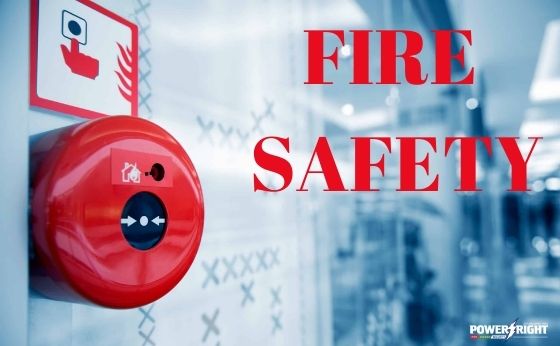
For some time in the pandemic, while business facilities were minimally occupied, building owners managed to keep up with their fire alarm maintenance and inspections.
However, the vaccine distribution allows the public to return to offices, schools and shopping centres, heightening the need to optimize and strengthen fire protection strategies. In other words, if there are more people in the building, its evacuation and fire detection processes must be more organized and efficient than ever.
Building owners should anticipate the possible negative consequences and do everything to deliver a secure environment and prevent any potential fire safety risks and fire protection system failures. The modern building integrates previously disparate technologies and systems, such as smoke and fire detection system, mass notification systems, advanced sensors and control units.
By connecting these data touchpoints into a single network, owners and managers access powerful data insights and automation providing maximum fire safety. Doing so makes it possible to drive such outcomes as the following:
Modern buildings are built and fitted with synthetic materials that burn much faster than last century buildings. Unfortunately, it means people have significantly less time to escape to safety. Thus, the owners need to take some measures to adjust the responses and use advanced, modern approaches.
Social distancing guidelines and the pandemic have called attention to the significance of off-site monitoring, as every on-site visit could present health risks.
Alternatively, integrating fire protection systems onto a single network backed by cloud technology allows facility managers to check and monitor the performance and health of multiple buildings and fire detection systems remotely via their phone or laptop.
Nuisance fire alarms are costly and time-consuming for businesses and local first responders. Although the first several false alarms may only cause minimal fees, repeated false alarms can result in crippling fines to the companies. What is more, recurring false alarms may cause apathy and ignorance amongst occupants, which is dangerous in the case of an emergency.
The fire department can even require some sort of verification before responding, especially if there have been nuisance alarms registered at your premises before. If you choose to implement video verification, you will be able to see the fire, its location and size.
Integrating fire systems provides an opportunity for facility managers to identify the source of false alarms efficiently and quickly. So, it will be easier to solve this problem once and for all.
Needless to say, system integration can have a significant positive impact on the overall administrative and operational costs. One central monitoring company can handle both systems at once.
In addition to that, a single life safety services company will be able to perform all of the necessary system repairs, inspections, and maintenance, reducing the number of service visits in a year. A combination of central management location and the smart system could reduce the need for on-the-ground surveillance staff and security guards.
It is much simpler for business owners to operate a single smart system than to manage them individually. Such features as instant messaging, camera footage, floor plans and touch screen are easy to use to access the fire detection system and pinpoint the incident.
When having integrated access to all systems, you will have many tools available at once to quickly identify the nature of an emergency and appropriately direct a response.
The integration allows fire alarm systems to communicate during an emergency. Also, it enables the automation of manual processes, making the most of evacuation time. Moreover, integrating business security and fire alarms systems ensures ease of use, cost savings, and better management, improving overall fire safety of commercial premises.